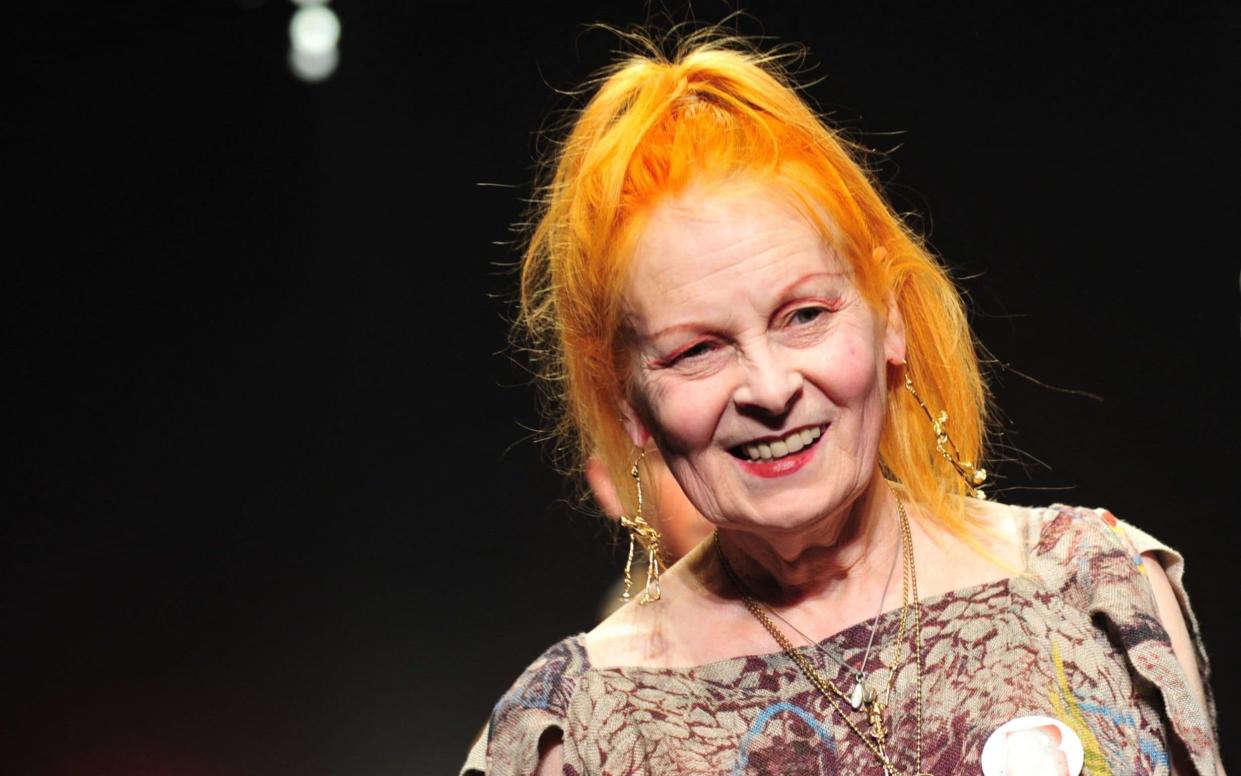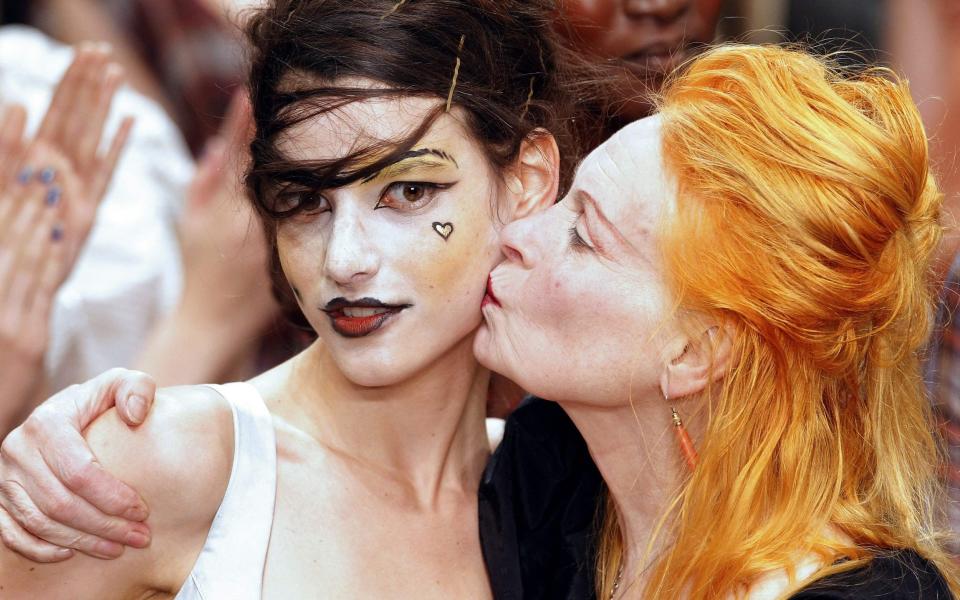Vivienne Westwood created powerful clothes that made the most of women

Vivienne Westwood, who died on Thursday at the age of 81 at her home in Clapham, South London, was a disruptor long before the term entered our vernacular.
The woman who would go on to exemplify the best in renegade fashion started out as a primary school teacher, with a passion for jewellery making on the side, but it was a chance encounter with Malcolm McLaren - who would later manage the Sex Pistols - that would help cement Westwood as a fashion designer.
The pair, then partners romantically as well as in business, opened a boutique called Let It Rock on The Kings Road in 1971, with Westwood selling her own-design clothes alongside vinyl records and bric-a-brac.
In 1974 the space was re-christened ‘Sex’ - emblazoned on 4-foot high neon pink signage - and Westwood, McLaren and the store became the stylistic north star of the punk movement, with the designer creating a counter-culture uniform of slashed knitwear, graffitied T-shirts, political messaging and bondage attire.
Provocation and anarchic abandon became her calling card; t-shirts with prints of breasts and, famously, one with two nude cowboys that resulted in the first customer to wear it being arrested for public indecency.

For all the shock appeal of Westwood’s clothes during this period - the designer had an expansive and forensic knowledge of historical references and 18th century dress, which parlayed into the more romantic side of her clothing.
From crinolines to cascades of tulle, her collections could oscillate between gritty political statements to full scale, dramatic ball gowns of ruched silk, richly decorative corsets incorporating Boucher imagery and playful puffball skirts.
She subverted the codes of British dress, from 17th century court attire to tartans, Harris tweeds and trench coats, slashing, re-working and re-inventing them in her own way. As a perfect embodiment of this, in 1989 she dressed as Margaret Thatcher for the cover of Tatler.
Yes, she could shock, but Vivienne Westwood also knew how to create powerful, sophisticated clothes that made the most of women’s bodies; gowns with crumb-catcher bodices and fluid draping acting as love letters to a woman’s frame.
Sex & The City’s Carrie Bradshaw dons a Westwood wedding gown for her ill-fated nuptials; Westwood found the film trite and walked out of the premiere. Certain signatures became part of the Westwood language; pirate boots, squiggle prints and those distinctive cleavage-spilling necklines, likewise necklaces emblazoned with the word ‘sex’ in capital letters.

Despite being awarded a damehood in 2006, Westwood stayed true to her convictions, proudly anti-establishment and fiercely vocal about her political beliefs, by the 90s she was known as an activist as well as a designer. Via her ‘manifestos’ published in print and online - Westwood, who for 30 years lived in an ex local authority flat - would raise awareness of causes from climate change to fracking and the release of Julian Assange.
Westwood was the purest example of what makes British fashion truly great; thoroughly modern in that her message was subversive, challenging and exciting, but rich in historical context and in celebrating British heritage and craft.
She influenced the world far beyond her sphere of fashion, becoming a cultural icon in a wider context and a pioneer as a female designer.
“The only reason I’m in fashion is to destroy the word ‘conformity’”, said Westwood, who is survived by her long-term partner Andreas Kronthaler and son Joe Corre. She did just that to grand and powerful effect.

 Yahoo News
Yahoo News 
